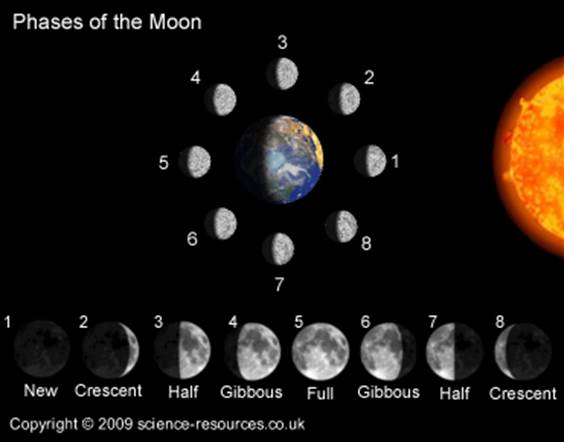Earth and the Moon (Phases of the Moon)
The moon – Earth’s natural satellite What is a lunar month? The eight phases of the moon
Phases of the Moon
The Moon looks different over time when we see it from Earth. Sometimes, the Moon is hard to see in the sky and at other times it can look like a thin curve, a full circle – or something in between.
A Moon phase is the shape of the part of the Moon that we can see, and this changes slowly over a lunar month.
A new Moon begins a lunar month, which lasts about 29.5 days. The new Moon is hard to see in the sky because the Sun’s light hits the side of the Moon that faces away from Earth.
As the Moon orbits around Earth, the lit part of the Moon’s surface starts to face towards Earth, and we see a thin crescent Moon.
The Moon has these phases during a lunar month:
Summary: